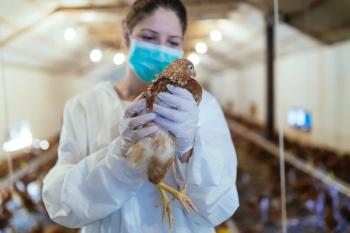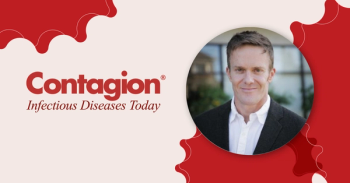
- December 2016
- Volume 1
- Issue 2
Why Is TB Still Such a Big Threat in the United States?

The history of Mycobacterium tuberculosis is intertwined with the history of human kind. There is evidence of tuberculosis (TB) in humans going back to 8000 BC.1 However, it wasn’t until 1882 that the pathogen causing the disease was discovered by Robert Koch, MD.2
The first World TB Day, which was developed to raise awareness of the devastating disease and its impact on global health was observed 100 years later in 1982.2 Approximately 11 years later, in 1993, WHO declared TB a global public health emergency.3
The disease has such a great propensity to cause significant morbidity and mortality that WHO launched “The End TB Strategy” last year.3 This article outlines a framework for a post-2015 global strategy to end the global TB epidemic with specific milestones and targets set for 2025 and 2035.3
The complex disease is one that progresses slowly, is easily spread, and affects many. One-third of the world’s population is infected with M. tuberculosis and approximately 9 million new cases and 2 million deaths occur each year due to this pathogen. The top 10 countries with TB (based on available reporting) are Bangladesh, China, Democratic Republic of the Congo, Ethiopia, India, Indonesia, Pakistan, the Philippines, Nigeria, and South Africa. Unfortunately, there are still areas of the world where this disease is still not reported. Tuberculosis is also the leading killer in individuals who are infected with HIV.4 Concurrent with the HIV epidemic in the 1980s in the United States, TB rose back into the American consciousness.
Given the massive movement of people between and within continents on a daily basis and the rapidity of travel in today’s modern world, TB needs to be in the forefront of infection control efforts in the United States and around the world. Although the trend in cases in the United States has shown a steady decline over the past 20 years (due to infection-control efforts, directly observed therapy, and antiretroviral therapy), the number of documented cases has been approximately 10,000 per year for the last 5 years. The most recent statistics from 2014 demonstrated 9,421 cases, with a rate of 3 cases per 100,000 individuals.5 In addition to Washington, DC, the states where the TB rate is ≥3 per 100,000 include Alaska, Arkansas, California, Hawaii, Maryland, New York, New Jersey, and Texas. Unfortunately, the progress in decreasing the rate of TB in the United States has stalled based on the 2013-2015 statistics.6 One of the more recent outbreaks occurred in Alabama.7
Tuberculosis is a disease whereby treatment is prevention. The pathogen is spread via inhalation of droplet nuclei that are aerosolized by coughing, sneezing, or talking and the air remaining infectious after an infected person leaves the room. Prolonged exposure is usually required for infection to occur while brief contact carries little risk. Utilizing strict infection-control measures, such as respiratory isolation, with potential cases is of utmost importance. Furthermore, screening high-risk populations with the purified protein derivative test or interferon-gamma release assays is necessary to identify those with latent or active disease. Treating those with latent disease will prevent future active disease from occurring, and treating those with active disease will minimize the morbidity and mortality associated with the infection. Ultimately, in both scenarios, the goal is to prevent the spread of M. tuberculosis.
The populations most at risk for TB include immigrants, the urban poor, alcoholics, intravenous drug abusers, the homeless, migrant farm workers, prison inmates, and those infected with HIV. Furthermore, there are five to ten times higher rates of infection in African Americans, Hispanic Americans, Asian Pacific Islanders, and Native Americans.4 It remains to be seen how the rates of TB (and HIV) will be affected by the current US opioid epidemic. Identifying and isolating cases is the first hurdle that needs to be addressed on an ongoing basis.
Once a patient with active disease is discovered, the next obstacle in treating tuberculosis is that a minimum of 2 drugs, generally 4, must be used in combination. Adherence is extremely important for eradicating the disease. Directly observed therapy is recommended when possible, especially for difficult cases such as those with multidrug resistant (MDR) or extensively drug resistant (XDR) M. tuberculosis. It may be demanding for patients to complete the complex regimens required for treatment based on the number of tablets needed, the prolonged duration (6-9 months or more), drug-drug interactions with other medications they are taking for comorbidities, and adverse drug reactions, such as gastrointestinal upset, fever, skin rash, or hepatitis.
Specialists with experience treating TB are needed to monitor and assist with adjusting regimens based on interactions and side effects, and determining if patients need to start the clock over again, in terms of duration, when treatment regimens are altered or paused for a certain period of time. More extensive information regarding treatment regimens and monitoring plans for patients with drug-susceptible TB are described in the updated clinical practice guidelines by the American Thoracic Society/Centers for Disease Control and Prevention/Infectious Diseases Society of America, published earlier this year.8
One of the toughest aspects of the disease is resistance. MDR TB refers to M. tuberculosis that is resistant to isoniazid and rifampin, the two core backbone agents used for treatment. XDR TB describes M. tuberculosis that is resistant to isoniazid and rifampin as well as a fluoroquinolone and one of the three second line intravenous agents available. The regimens utilized under these circumstances are challenging, usually require intravenous or intramuscular administration, and have significant adverse effects. Not only are these regimens more difficult to formulate based on the resistance patterns of the isolate, but they are also prolonged, with courses lasting up to 2 to 3 years. In 2014, 91 cases of MDR and 2 cases of XDR TB were identified in the United States.5
Lessons learned from recent outbreaks of other infectious diseases, such as Ebola, Zika, and MDR gram-negative bacteria, throughout the world demonstrate that there is no fail-safe way to stop the entrance of pathogens into the United States. As Hans Zinsser stated in the 1930s, “But however secure and well-regulated civilized life may become, bacteria, protozoa, viruses, infected fleas, lice, ticks, mosquitoes, and bedbugs will always lurk in the shadows ready to pounce when neglect, poverty, famine, or war lets down the defenses.” Efforts to limit the spread of TB need to continue at all levels and in all places to inhibit its potential for widespread morbidity and mortality. Further research to make identification more rapid, education to promote awareness and infection control practices, and the development of antimycobacterials that demonstrate efficacy and better tolerability, with shorter courses, over the current regimens are all vital to ending TB not only in the United States, but around the world.
Dorothy McCoy, PharmD, BCPS-AQ ID, is currently the infectious diseases/ antimicrobial stewardship clinical pharmacist at Saint Joseph’s Regional Medical Center in Paterson, NJ. She received her doctor of pharmacy degree from the Ernest Mario School of Pharmacy (EMSOP) at Rutgers University, and added qualifications in infectious diseases pharmacotherapy from the Board of Pharmaceutical Specialties. She has been an active member of the Society of Infectious Diseases Pharmacists, serving on multiple committees within the organization, and is also involved in the American College of Clinical Pharmacy, American Society of Health-System Pharmacists, and the NJ Society of Health-System Pharmacists.
REFERENCES
1. Sherman IW. Twelve diseases that changed our world. Emerg Infect Dis. 2007;14(5):866.
2. Centers for Disease Control and Prevention. History of World TB Day. CDC website. www.cdc.gov/tb/worldtbday/history.htm. Updated January 7, 2016. Accessed November 15, 2016.
3. World Health Organization. The end TB strategy: global strategy and targets for tuberculosis prevention, care and control after 2015. WHO website. www.who.int/tb/strategy/ End_TB_Strategy.pdf ?ua=1. Published March 14, 2014. Accessed November 15, 2016.
4. Namdar R, Lauzardo M, Peloquin CA. Tuberculosis. In: DiPiro JT, Talbert RL, Yee GC, Matzke GR, Wells BG, Posey LM, eds. Pharmacotherapy: A Pathophysiologic Approach. 9th ed. New York: McGraw-Hill; 2014:1787-1807.
5. Centers for Disease Control and Prevention. Tuberculosis in the United States: national tuberculosis surveillance system highlights from 2014. CDC website. www.cdc.gov/tb/statistics/ surv/surv2014/default.htm. Updated September 15, 2015. Accessed November 15, 2016.
6. Salinas JL, Mindra G, Haddad MB, Pratt R, Price SF, Langer AJ. Leveling of tuberculosis incidence — United States, 2013-2015. MMWR Morb Mortal Wkly Rep. 2016;65(11)273-278. doi: 10.15585/ mmwr.mm6511a2.
7. Blinder A. In rural Alabama, a longtime mistrust of medicine fuels a tuberculosis outbreak. New York Times website. www. nytimes.com/2016/01/18/us/in-rural-alabama-a-longtimemistrust- of-medicine-fuels-a-tuberculosis-outbreak.html?_r=0. Published January 17, 2016. Accessed November 17, 2016.
8. Nahid P, Dorman SE, Alipanah N, et al. Official American Thoracic Society/Centers for Disease Control and Prevention/ Infectious Disease Society of America clinical practice guidelines: treatment of drug-susceptible tuberculosis. Clin Infect Dis. 2016;63(7):e147-195. doi: 10.1093/cid/ciw376.
Articles in this issue
almost 9 years ago
Epclusa: What Have We Learned?almost 9 years ago
What Issues Are We Still Facing with Curing HIV?almost 9 years ago
Innovation Is the Key to a Healthy Futurealmost 9 years ago
Guideline Updates for Infective Endocarditis, HAP, and VAPNewsletter
Stay ahead of emerging infectious disease threats with expert insights and breaking research. Subscribe now to get updates delivered straight to your inbox.
















































































































































































































































































